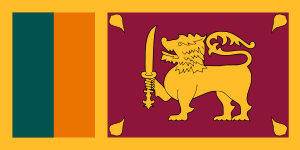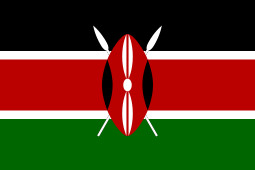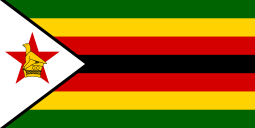County Ground, Southampton
The County Ground in Southampton, England was a cricket and football ground. It was the home of Hampshire County Cricket Club from the 1885 English cricket season until the 2000 English cricket season. The ground also served as the home ground for Southampton Football Club from 1896 to 1898.
 | |||
| Ground information | |||
|---|---|---|---|
| Location | Southampton, Hampshire | ||
| Demolished | 2001 | ||
| Capacity | 7,000 | ||
| End names | |||
| City End Northlands Road End | |||
| International information | |||
| First ODI | 16 June 1983: | ||
| Last ODI | 30 May 1999: | ||
| Team information | |||
| |||
| As of 16 December 2007 Source: CricketArchive | |||
History
1885–1914
Hampshire's first match at the County Ground was in 1885 against the Marylebone Cricket Club. In that match Hampshire bowler James Fellowes ended with the best figures of 3-38 in the opening innings at the County Ground, during which the Marylebone Cricket Club made 269. Batting at number eleven, Fellowes was also top scorer with 18 in Hampshire's first innings total of 74 and remained unbeaten on seven when Hampshires second innings was wrapped up for 82, with Hampshire losing the match by an innings and 113 runs[1]
Hampshire went into their first County Championship match at the County Ground against Derbyshire in the same season as their loss to the Marylebone Cricket Club. Hampshire, losing the toss, struggled to stem the flow of runs coming from the Derbyshire batsman, in particular from the bat of Frank Sugg who made 187. James Fellowes claimed three wickets but Hampshire once again crashed to an innings and 243 run defeat.[2]
The highest score at the County Ground came two years after the Club moved to Northlands Road from its previous home ground of the Antelope Ground. In 1887 Francis Lacey made 323 not out against Norfolk.
In 1912 the County Ground played host to Hampshire's victory over touring side Australians. In Hampshire's first innings Phil Mead scored an unbeaten 160 runs. In the Australians reply Alec Kennedy to 6/90, to restrict the Australians to 197. Following on, the Australians were restricted to 256, with Kennedy taking his second five wicket haul in the match, taking 5/91 to leave him with match figures of 11/181. Hampshire required 86 runs to win, which they reached for the loss of two wickets.
With the onset of the First World War in 1914, first-class cricket was stopped until 1919, from which first-class cricket resumed at the County Ground.
1919–1939
In 1921 the touring Australians scored 708-7 declared, the highest first-class innings on the ground. The match ended in a draw. In 1930 crowds flocked to the County Ground to watch Don Bradman complete his 1,000 runs before the end of May, with Bradman making 191 runs in Australians first innings.[3] During this period in the grounds history, Phil Mead was in his prime and by 1932, Mead had completed centuries against every county, finishing with a hundred against Derbyshire. In a career that spanned from 1905 to 1936, he made 138 centuries in 700 matches and heads the list of Hampshire's great runmakers. Mead played on the ground 187 times, where he scored 14,504 runs at an average of 56.42.
With the start of the Second World War in 1939, just like in 1914 first-class cricket was suspended, with matches not resuming at the County Ground until 1946.
1939–2000
The County Ground played host to Hampshire's 1961 and 1973 County Championship winning seasons, as well as playing host to its first List-A match in 1965, when Norfolk were the visitors in the 1965 Gillette Cup.
In 1983 the ground hosted its first One Day International when Australia took on Zimbabwe in the 1983 Cricket World Cup. Australia won the match by four wickets.
Cardigan Connor who took 9-38 in 1996 and Kevan James took four wickets in four balls in the match against the touring Indians in the same year. In 1999 the ground played host to its final two One Day Internationals in the 1999 Cricket World Cup when New Zealand played the West Indies, with the West Indies winning by seven wickets. The second match saw Kenya play Sri Lanka, which the Sri Lankans won by 45 runs.
After 115 years at the County Ground, the 2000 County Championship marked the club's last season at the County Ground. The ground's last first-class match saw Yorkshire as the visitors. The County Ground played host to three One Day International, 565 first-class matches and 211 List-A matches.
For 2001, Hampshire moved to the new Rose Bowl ground. The site of the County Ground is now a housing estate.[4]
Cricket records
International
One-Day International
- Highest team total: 275/8 (50 overs) by Sri Lanka


- Lowest team total: 156 (48.1 overs) by New Zealand


- Highest individual innings: 84 by David Houghton for Zimbabwe

.svg.png)
- Best bowling in an innings: 4/46 by Mervyn Dillon for West Indies


Domestic
First-class
- Highest team total: 708/7d by the Australians v. Hampshire, 1921[9]
- Lowest team total: 30 by Hampshire v. Nottinghamshire, 1932[10]
- Highest individual innings: 303* by Graeme Hick for Worcestershire v. Hampshire, 1997[11]
- Best bowling in an innings: 9-38 by Cardigan Connor for Hampshire v. Gloucestershire, 1996[12]
- Best bowling in a match: 17-119 by Walter Mead for Essex v. Hampshire, 1895[13]
List A
- Highest team total: 371/4 (60 overs) by Hampshire v. Glamorgan, 1975[14]
- Lowest team total: 63 (30.3 overs) by Hampshire v. Surrey, 1997[15]
- Highest individual innings: 177 by Gordon Greenidge for Hampshire v. Glamorgan, 1975[16]
- Best bowling in an innings: 7/30 by Peter Sainsbury for Hampshire v. Norfolk, 1965[17]
Football
Between 1896 and 1898, the County Ground was home to Southampton Football Club, during which period the club won the Southern League championship in both seasons and reached the FA Cup semi-final in 1898. The highest score during this period was in a Southern League match against New Brompton on 7 November 1896, which "the Saints" won 8–3 with a hat-trick from Willie Naughton. In the FA Cup, Southampton defeated Swindon Town 8–2 on 2 January 1897, with Jack Farrell scoring three, and Eastville Rovers 8–1 on 11 December 1897.[18]
Southampton had used the County Ground for high-profile matches prior to 1896, including FA Cup matches and the finals of the Hampshire Senior Cup. On 26 April 1893, a team from Stoke visited the County Ground to play a friendly match against Southampton St Mary's. Even with the future founder of football in Brazil, Charles Miller[19] playing at outside-left, the "Saints" were "outplayed fairly and squarely on every point",[20] losing 8–0. Despite the result, it was reported that the spectators "thoroughly enjoyed the exhibition" and looked forward to witnessing "more matches of a similar character" in future.[20]
Further reading
- Chris Arnot, Britain's Lost Cricket Grounds, Aurum, 2011.
References
- "County Ground, Southampton". Cricinfo. Retrieved 31 January 2013.
- "County Ground, Southampton - Highest Team Totals in ODI cricket". CricketArchive. Retrieved 23 January 2012.
- "County Ground, Southampton - Lowest Team Totals in ODI cricket". CricketArchive. Retrieved 23 January 2012.
- "Australia v Zimbabwe, 1983 World Cup". CricketArchive. Retrieved 23 January 2012.
- "County Ground, Southampton - Four Wickets in an Innings in ODI cricket". CricketArchive. Retrieved 23 January 2012.
- "County Ground, Southampton - Highest Team Totals in first-class cricket". CricketArchive. Retrieved 23 January 2012.
- "County Ground, Southampton - Lowest Team Totals in first-class cricket". CricketArchive. Retrieved 23 December 2012.
- "County Ground, Southampton - Double Centuries in first-class cricket". CricketArchive. Retrieved 23 January 2012.
- "County Ground, Southampton - Seven Wickets in an Innings in first-class cricket". CricketArchive. Retrieved 23 January 2012.
- "County Ground, Southampton - Most Wickets in a Match in first-class cricket". CricketArchive. Retrieved 23 January 2012.
- "County Ground, Southampton - Highest Team Totals in List A matches". CricketArchive. Retrieved 23 January 2012.
- "County Ground, Southampton - Lowest Team Totals in List A matches". CricketArchive. Retrieved 23 January 2012.
- "County Ground, Southampton - Centuries in List A matches". CricketArchive. Retrieved 23 January 2012.
- "County Ground, Southampton - Five Wickets in an Innings in List A matches". CricketArchive. Retrieved 23 January 2012.
- Chalk, Gary; Holley, Duncan (1987). Saints – A complete record. Breedon Books. pp. 20–22. ISBN 0-907969-22-4.
- Hamilton, Aidan (1998). An Entirely Different Game, The British Influence on Brazilian Football. Mainstream Publishing. ISBN 1-84018-041-2.
- Bull, David; Brunskell, Bob (2000). Match of the Millennium. Hagiology Publishing. pp. 12–13. ISBN 0-9534474-1-3.